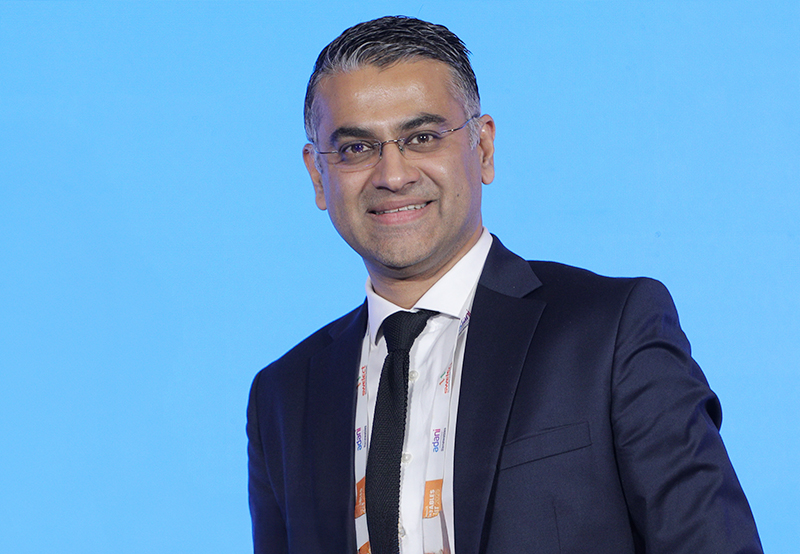India Must Enforce Strict Testing as Solar Manufacturing Volumes Surge: Interview
Process control and technical expertise are as important as speed and scale in solar manufacturing
Follow Mercom India on WhatsApp for exclusive updates on clean energy news and insights
In an interview on the sidelines of the Mercom India Renewables Summit 2025 held in New Delhi on July 24 and 25, 2025, Sishir Garemella, Head of International Business Development at Kiwa PVEL, shared his insights into the evolving landscape of solar module reliability and manufacturing quality.
He stressed that success in global markets depends not only on high-quality products but also on consistent, well-executed manufacturing processes, automation, and workforce training. As India rapidly scales up both module and cell production, Garemella advised manufacturers to prioritize reliability testing and technical talent development.
Please provide an overview of the services Kiva PVEL provides.
Kiva PVEL is a globally recognized reliability testing lab headquartered in California. We operate two labs, one in California and another in China. The Chinese lab primarily tests modules from Chinese manufacturers, while our Napa facility in California handles modules sourced from the rest of the world.
One of our core offerings is the Product Qualification Program, which we revise every few years to reflect the latest trends and challenges in module reliability. This program replicates real-world environmental stresses such as heat, humidity, and UV exposure. It spans a six-month period and includes a range of rigorous test legs to evaluate whether modules can genuinely deliver on their 25 to 30-year warranty promises.
We have seen TOPCon modules achieve higher efficiencies than Mono PERC, but they also show higher degradation in Indian conditions. Why is that?
Yes, TOPCon is a relatively newer technology, whereas Mono PERC has been around for a while and is more established. In our testing, TOPCon modules have exhibited an issue called UV-induced degradation (UVID).
The industry has not yet pinpointed the exact cause of this degradation. It could stem from the cell itself, the encapsulant, or a combination of factors. In some cases, the degradation appears to reverse when the module is kept in the dark and re-flashed. It is still an open area of investigation. That said, all modules, regardless of technology, undergo the same environmental reliability testing.
How do Indian modules compare with those from Western manufacturers under lab testing?
Indian modules are generally on par with global counterparts in terms of long-term reliability. However, as with any market where manufacturing is relatively new, including India, Laos, Indonesia, or even the U.S., we notice slightly more quality assurance (QA) and quality control issues.
These are not structural failures but are indicative of the early-stage learning curve. As the industry matures and production stabilizes, these issues tend to decline. Overall, Indian manufacturers are holding up well under our reliability standards.
What do Indian module manufacturers need to focus on to compete on the global stage?
Two critical factors define long-term performance. One is the bill of materials (BOM). Choosing the right materials is foundational. The second is the manufacturing process. Even with the same BOM, different manufacturers can get drastically different results based on their operational practices.
One of my colleagues puts it nicely: If you and I bake a cake using the same recipe, we could still end up with completely different cakes. It is not just about the ingredients. It is about how skilled your workforce is, how automated your line is, and how tightly you control process variables. Indian companies that invest in both quality materials and robust manufacturing practices are already doing quite well.
India is scaling up module and cell manufacturing rapidly. How can quality be ensured during this expansion?
I have two key suggestions, one conventional and one slightly unconventional. First is the need for more testing and accountability. As the industry scales, there is more at stake. India is no longer a small-volume market. We are talking about 95-plus GW of module capacity. If something goes wrong with even a single 200 MW project, the financial exposure is significant. That is why developers, financiers, insurers, and downstream players must enforce batch-level reliability testing. Whether the testing happens in India or at our labs in the U.S. or China, the point is to embed this into the procurement and financing process.
Second is a focus on talent development. This is less discussed but critically important. Module manufacturing is process-heavy. It is like running a well-organized assembly line where attention to detail and a trained workforce matter. Cell manufacturing, on the other hand, is quite different. It is more like cooking, where minor changes in the recipe can lead to very different outcomes. A pinch of something added today might not behave the same tomorrow. So we need experienced technical leadership, focused R&D, and long-term investments in skill-building, especially as India begins scaling its cell manufacturing base. In summary, process control, skilled workforce, and technical expertise are just as important as speed and scale.
